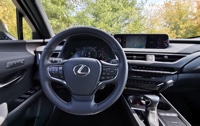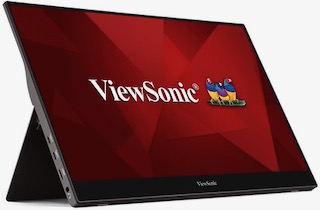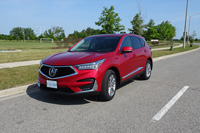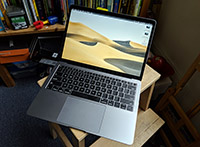2009 Canadian International Auto Show - Overview
 Saturday, February 14, 2009 at 1:27PM
Saturday, February 14, 2009 at 1:27PM  Text and Photos by Gadjo Cardenas Sevilla
This year's Canadian International Auto Show pushed on bravely despite the economic downturn and glum news of layoffs in the industry.
They mood at this year's Auto Show was sombre and low key, a big difference from the glitz and spectacle if the past years. Aside from a few dozen car aficionados snapping photos and enthusiasts checking out the latest and greatest, you could feel the heaviness of the times clear across the exhibit floor. The focus of this year's show was hybrid and green technologies that improved on economy over horsepower and styling.
Text and Photos by Gadjo Cardenas Sevilla
This year's Canadian International Auto Show pushed on bravely despite the economic downturn and glum news of layoffs in the industry.
They mood at this year's Auto Show was sombre and low key, a big difference from the glitz and spectacle if the past years. Aside from a few dozen car aficionados snapping photos and enthusiasts checking out the latest and greatest, you could feel the heaviness of the times clear across the exhibit floor. The focus of this year's show was hybrid and green technologies that improved on economy over horsepower and styling.
 The Nissan GTR Supercar makes an appearance in Toronto
More on the 2009 Canadian International Auto Show after the break.
The Nissan GTR Supercar makes an appearance in Toronto
More on the 2009 Canadian International Auto Show after the break.
 The Subaru G4e Electric car concept: A sign of green things to come
This year's Car of The Year award went to the Hyundai Genesis, a luxury sedan and the first Korean-made vehicle to ever take top honors in the show. The Toronto Star explains the reason why the Genesis turned so many heads.
"The Genesis, Hyundai's first rear-wheel drive, performance sedan, beat 11 other "Best New" category winners to win the top prize, adding to its win earlier this year as the "North American Car of the Year."
To win Canadian Car of the Year honours, the Hyundai Genesis was first named AJAC's Best New Luxury Vehicle Under $50,000, defeating several other well-known luxury brands, such as the Audi A3, Acura TL and Infiniti G37X.
Following rigorous testing, the auto journalists decided the Genesis surpassed competitors in areas such as engine refinement, ride comfort, exterior styling, visibility, roominess and comfort. "
The Subaru G4e Electric car concept: A sign of green things to come
This year's Car of The Year award went to the Hyundai Genesis, a luxury sedan and the first Korean-made vehicle to ever take top honors in the show. The Toronto Star explains the reason why the Genesis turned so many heads.
"The Genesis, Hyundai's first rear-wheel drive, performance sedan, beat 11 other "Best New" category winners to win the top prize, adding to its win earlier this year as the "North American Car of the Year."
To win Canadian Car of the Year honours, the Hyundai Genesis was first named AJAC's Best New Luxury Vehicle Under $50,000, defeating several other well-known luxury brands, such as the Audi A3, Acura TL and Infiniti G37X.
Following rigorous testing, the auto journalists decided the Genesis surpassed competitors in areas such as engine refinement, ride comfort, exterior styling, visibility, roominess and comfort. "
 Hyundai
Small was Big
Subcompacts, specially those with electric engines or hybrid variants were popular at the show even if most of them were prototypes. Kia and Nissan lit up their exhibit spaces with the Soul and the Cube respectively. Mitsubishi, whose iMiEV concept car is a full time electric car and is about as large as a Smart ForTwo, was a popular draw in the show.
Hyundai
Small was Big
Subcompacts, specially those with electric engines or hybrid variants were popular at the show even if most of them were prototypes. Kia and Nissan lit up their exhibit spaces with the Soul and the Cube respectively. Mitsubishi, whose iMiEV concept car is a full time electric car and is about as large as a Smart ForTwo, was a popular draw in the show.
 Mitsubishi was on board with their electric iMiEV concept car .
Mitsubishi was on board with their electric iMiEV concept car .
 The 2010 Kia Soul - Subcompact with an attitude.
The desire for small, economical cars is reflective of the tough times faced by car buyers specially considering the pressure to consume less gasoline and simplify the way we commute. The only problem we saw with the latest batch of micro compacts is that they haven't really evolved stylistically and remain unattractive, boxy and look like derivatives of the popular Honda Element and the Scion xB. We get the need for cheap and functional transportation but really can't fathom the milk truck cookie-cutter approach taken by the manufacturers.
Jonesing for the Trucks
Trucks and pickups are still popular specially when you consider models like Hummer's H3-T truck, Ford's Raptor Pickup and some of the more sober models from Jeep.
The 2010 Kia Soul - Subcompact with an attitude.
The desire for small, economical cars is reflective of the tough times faced by car buyers specially considering the pressure to consume less gasoline and simplify the way we commute. The only problem we saw with the latest batch of micro compacts is that they haven't really evolved stylistically and remain unattractive, boxy and look like derivatives of the popular Honda Element and the Scion xB. We get the need for cheap and functional transportation but really can't fathom the milk truck cookie-cutter approach taken by the manufacturers.
Jonesing for the Trucks
Trucks and pickups are still popular specially when you consider models like Hummer's H3-T truck, Ford's Raptor Pickup and some of the more sober models from Jeep.
 Raptor in Toronto: Grilled out and massive, Ford
Raptor in Toronto: Grilled out and massive, Ford
 This Hummer hauls: The H3T truck
All in all, the 2009 Canadian International Auto Show managed to showcase the trends for the coming few years quite well. We would have liked to have seen more innovation and technology as well as exciting new models in all fronts but 2009 is obviously a year of introspection in the market. This mood was evident in this year's auto show.
This Hummer hauls: The H3T truck
All in all, the 2009 Canadian International Auto Show managed to showcase the trends for the coming few years quite well. We would have liked to have seen more innovation and technology as well as exciting new models in all fronts but 2009 is obviously a year of introspection in the market. This mood was evident in this year's auto show.























 This marks a bold step in processor design, with more cores built into chips than ever before. Think of each chip as being a cluster of cores acting as mini-computers, each core with the processing power of one desktop from 2 years ago. Intel isn’t just bunching together Core 2 Duo chips to create 4 core Frankenstein processors, it is building multi-core processors on a single-die. This guarantees improved bandwidth and reduced latency
Coupled with Intel’s fastidious architecture and cooling design, its is only a matter of time before we see these chips powering all sorts of PCs from slim servers to notebooks and tablets. There are actually three variants of the Core i7. The first, Bloomfield, is the high-performance and gaming-class chip which is already out in the market and which slings a 3.2Ghz Quad Core processor. Soon to hit the market are more affordable mainstream models called Lynnfield and Ibex Peak. The bandwidth on these bad boys is expected to be double that of the fastest bus interconnect available on current Core 2 chips.
Turbo Mode and Multi-threading inside
These fast processors will be offering users some new features such as Turbo Mode, which independently ramps up the operating frequency of individual cores. This means that the clock speed of one, two or three cores can be increased by up to 266 MHz above the official rating whenever the chips detect single, double or triple-threaded software is being processed.
As multi-threaded applications become more common, the power of the eight core Nehalem processors will be put to better use.
Caption: Nehalem Demoed by Intel.
The processor game isn’t just about raw power and brute force but also about properly channeling all this computing power effectively and distributing the workload among the different cores. Expect great things from Intel on the processor front, those who are slated to replace their desktops in 2009 and who are considering getting Nehalem processors will be no doubt rewarded with unparalleled power, efficiency and versatility that these new chips offer in abundance.
-By Gadjo Cardenas Sevilla
This marks a bold step in processor design, with more cores built into chips than ever before. Think of each chip as being a cluster of cores acting as mini-computers, each core with the processing power of one desktop from 2 years ago. Intel isn’t just bunching together Core 2 Duo chips to create 4 core Frankenstein processors, it is building multi-core processors on a single-die. This guarantees improved bandwidth and reduced latency
Coupled with Intel’s fastidious architecture and cooling design, its is only a matter of time before we see these chips powering all sorts of PCs from slim servers to notebooks and tablets. There are actually three variants of the Core i7. The first, Bloomfield, is the high-performance and gaming-class chip which is already out in the market and which slings a 3.2Ghz Quad Core processor. Soon to hit the market are more affordable mainstream models called Lynnfield and Ibex Peak. The bandwidth on these bad boys is expected to be double that of the fastest bus interconnect available on current Core 2 chips.
Turbo Mode and Multi-threading inside
These fast processors will be offering users some new features such as Turbo Mode, which independently ramps up the operating frequency of individual cores. This means that the clock speed of one, two or three cores can be increased by up to 266 MHz above the official rating whenever the chips detect single, double or triple-threaded software is being processed.
As multi-threaded applications become more common, the power of the eight core Nehalem processors will be put to better use.
Caption: Nehalem Demoed by Intel.
The processor game isn’t just about raw power and brute force but also about properly channeling all this computing power effectively and distributing the workload among the different cores. Expect great things from Intel on the processor front, those who are slated to replace their desktops in 2009 and who are considering getting Nehalem processors will be no doubt rewarded with unparalleled power, efficiency and versatility that these new chips offer in abundance.
-By Gadjo Cardenas Sevilla